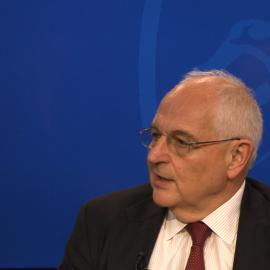To the Editor:
Richard Rhodes and Denis Beller are correct that nuclear power can become the preferred source of electricity for urban areas with high population densities. But because of transmission costs, centrally generated nuclear power is not a practical source of electricity for rural areas with low population densities -- where 2.7 billion people, mostly in China and India, currently live without electricity. This population, projected to grow to 4 billion by 2030 or so, now produces more than half the globe's 2 billion tons of cereal harvest annually.
This population should be encouraged to stay on its land to help grow the additional billions of tons of cereals that the world will require by the middle of the century. But to do so, it needs enough electrical power. In fact, 50 square meters of photovoltaic solar arrays per household can generate the needed power at middle latitudes. Since much of this power is used after sundown, a device that can efficiently and repeatedly store a few kilowatt-hours of solar-generated electrical energy is needed. This would allow centrally generated electricity from nuclear reactors to be confined to cost-effective usage in high-density urban and industrial areas. The required storage devices need not be compact, lightweight, or portable, as in the case of electric cars. But they should be efficient, reliable, durable, nonpolluting, and affordable. No such devices exist today, and vigorous research will be needed to develop them. But the solution is not beyond current capabilities.
Matching the power-density properties of the sources of electrical power to the geographic density of prospective consumers is a rational way of addressing the long-term energy needs of the expanding global population.
Kosta Tsipis
Research Scientist, Department of Mechanical Engineering, Massachusetts Institute of Technology
